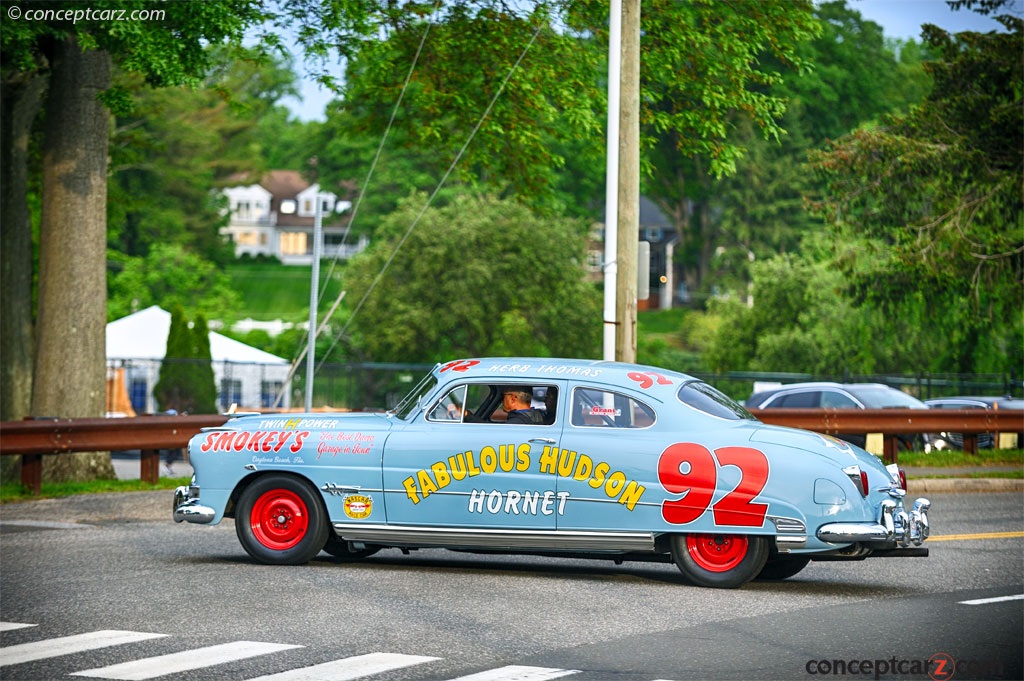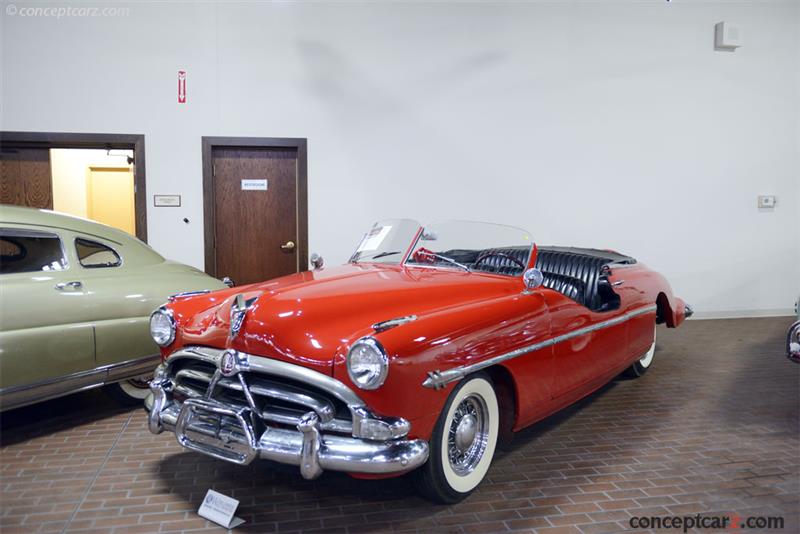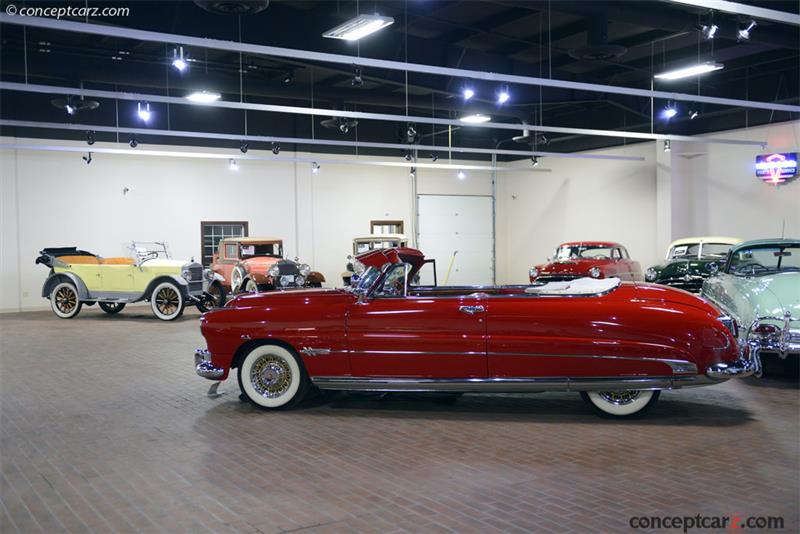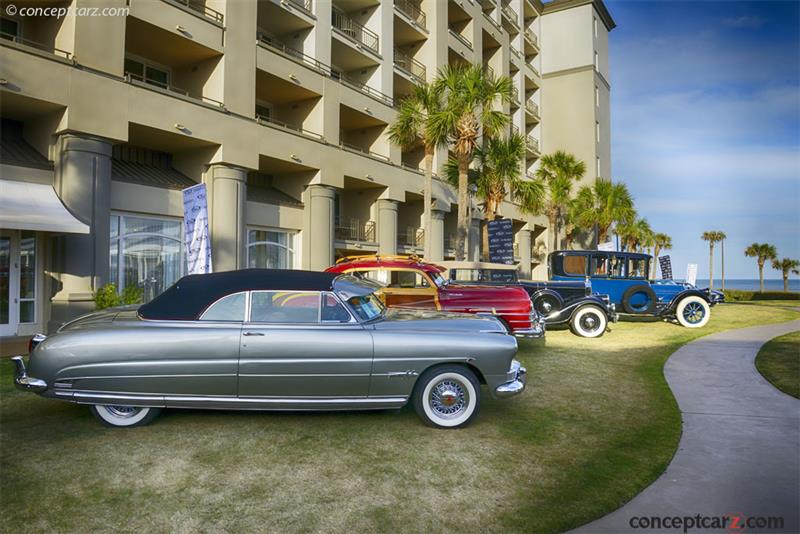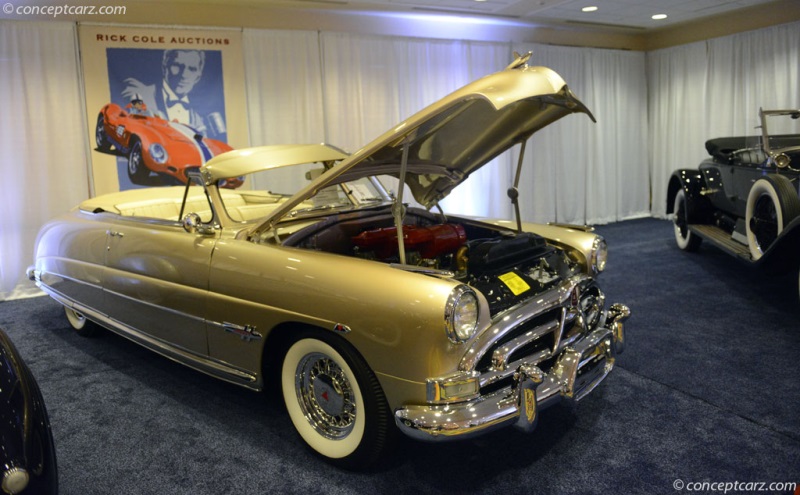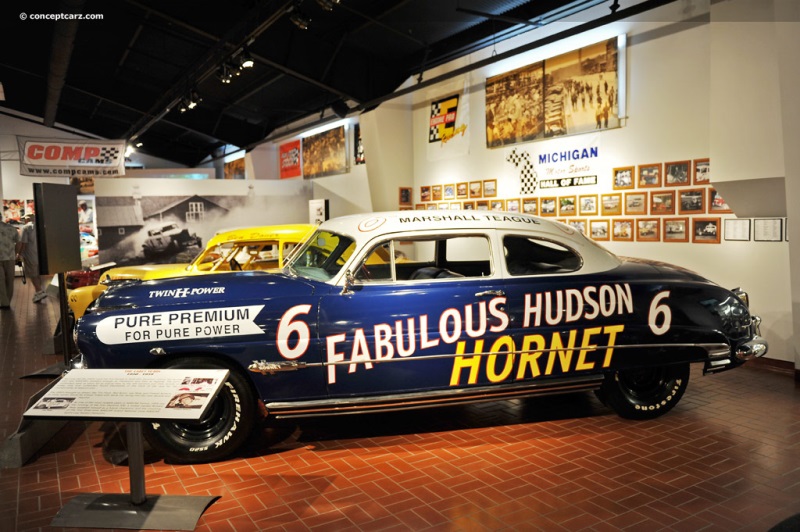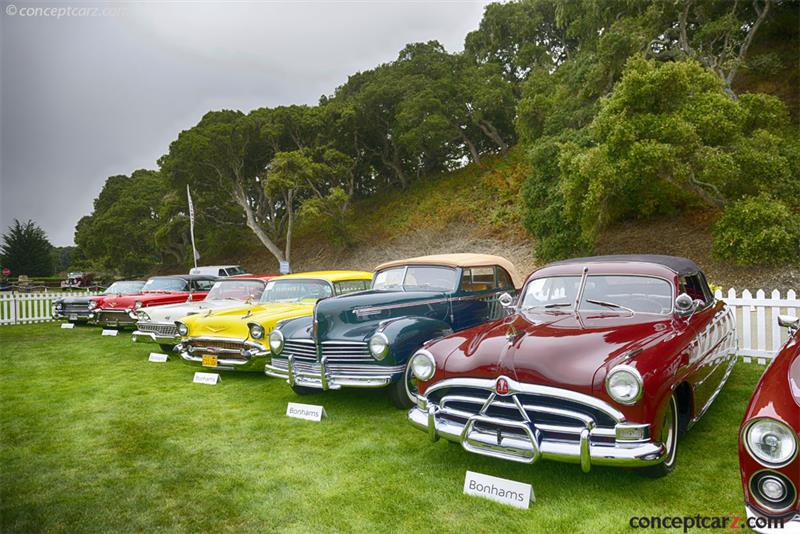1951 Hudson Hornet Series 7A Navigation
Hudson's top-of-the-line model for 1951 was the new Hornet. It was essentially a Commodore with Hornet identification, distinguishable features, and a high-performance 308 cubic-inch six-cylinder engine. Hudson introduced their 'step-down' bodies in 1948, which continued through the 1954 model year. 'Step Down' referred to Hudson's placement of the passenger compartment down inside the perimeter of the frame. As the passengers entered the vehicle, they stepped down into a floor that was surrounded by the perimeter of the car's frame. Hudson described its body and frame construction as a 'monobloc' or unit body, one of the first in the United States auto industry. The overhead height of the car was 60 inches.Distinguishable features setting the Hudson apart from the Commodore included a chrome- and gold-plated 'Skyliner Styling' hood mascot. Inside were deluxe robe hanger handgrips along with tailored pockets on the back of the front seat. On each front door valance panel were Hornet H-145 medallions. Rocket ship-shaped Badges of Power could be found on the front of the bodyside rub moldings and on the trunk. Bodystyles included the sedan, club coupe, convertible brougham, and the Hollywood hardtop. During its introductory year, Hudson produced a total of 43,666 examples of the Hornet. 
Convertible Brougham
View info and historyThe Hudson Hornet rested on a wheelbase that measured 123.8 inches and was powered by a 308 CID six-cylinder engine offering 145 horsepower. The all-new H-145 flathead six produced more horsepower than the new OHV V-8s offered by Oldsmobile and Cadillac and nearly 20 horsepower more than the luxurious Hudson Commodore Eight (which wore the Hudson Super Six Custom body). The bigger engine was available exclusively in the Hornet in 1951 and featured an aluminum 'Power Dome' cylinder head and higher compression at 7.2:1, making it the largest and most powerful six-cylinder engine in an American car. A single two-barrel carburetor fed fuel into the engine. In late 1951, dealers began offering Twin H-Power, becoming a factory option in 1952. Twin H-Power replaced the single two-barrel carburetor with two one-barrel carburetors feeding through individual manifolds, and horsepower rose to 160 hp with 257 lbs-ft of torque. With the powerful H145 engine, the Hornet was a fearsome competitor for NASCAR and AAA stock car racing. They won more races and championships between 1951 through 1954 than any other manufacturer. Known as the 'Fabulous Hudson Hornets,' these cars won 13 races in 1951, 49 races in 1952, and 46 in 1953, together with the 1952 and 1953 NASCAR championships.
by Daniel Vaughan | Feb 2019
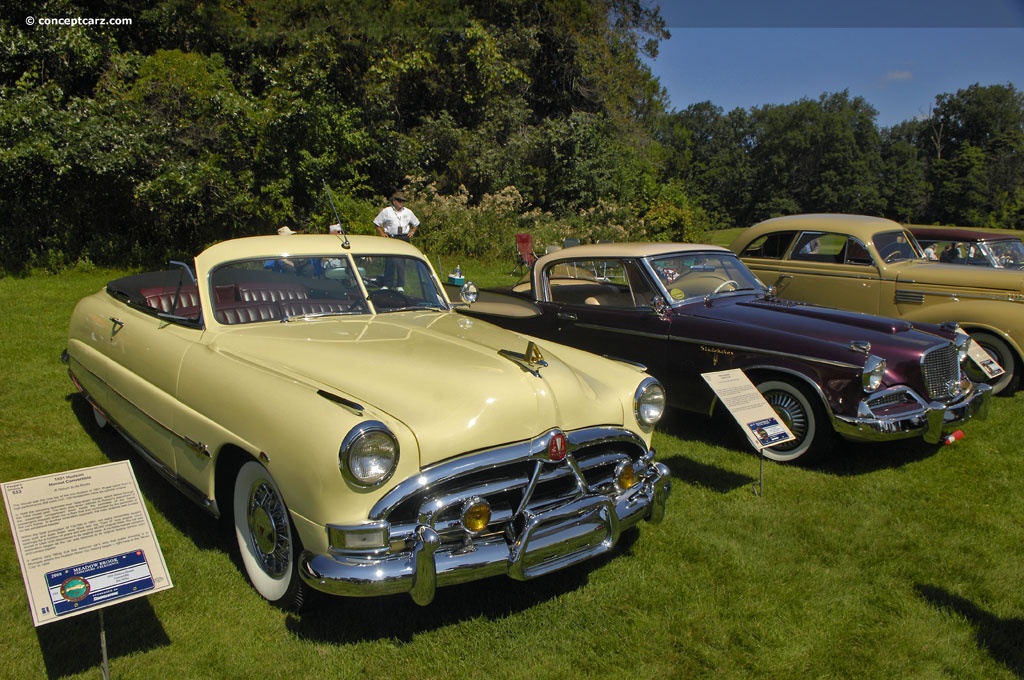
Convertible Brougham
View info and history
by Daniel Vaughan | Feb 2019
Related Reading : Hudson Hornet History
The Hudson Motor Car Company came into existence in 1909 and produced vehicles until 1957. It was created by Howard Coffin, George W. Dunham, and Roy E. Chapin. Based in Detroit, Michigan, the company had its most successful year in 1929, when it produced and sold over 300,000 vehicles. From 1942 through 1945, the Hudson Corporation did its patriotic part by manufacturing war materials, such as naval....
Continue Reading >>
Continue Reading >>
- 1951 Hudson Hornet Series 7A Menu
- Article
- Image gallery
- Valuation
- Specifications
- Profiles
- Production figures
Hudson
Similar Automakers
Similarly Sized Vehicles
from 1951
- Alfa Romeo 6C 2500
Chrysler Saratoga
Ford Custom Deluxe
Hudson Pacemaker Custom
Oldsmobile Ninety-Eight
Packard 200
Packard 200 Henney
Packard Series 250
Similarly Priced Vehicles
- Buick Special Series 40 ($2,050-$2,560)
- Allard K2 ($3,100-$3,100)
- Morgan Plus Four ($2,455-$2,655)
- Frazer Manhattan ($3,070-$3,070)
- Oldsmobile Ninety-Eight ($2,270-$2,640)
- Citroen Traction Avant ($2,300-$3,000)
- Packard 200 ($2,300-$2,615)
- Buick Roadmaster Series 70 ($3,050-$3,977)
- Jowett Jupiter ($2,545-$2,545)
- Lea-Francis Eighteen ($2,799-$2,799)
- Hudson Pacemaker Custom ($1,965-$2,640)
- Chrysler Saratoga ($2,990-$4,240)
Average Auction Sale: $79,009
1951 Hudson Hornet Series 7A Vehicle Profiles
Recent Vehicle Additions
Performance and Specification Comparison
Price Comparison
$1,965 - $2,640
Hornet Specification Comparison by Year
Year
Production
Wheelbase
Engine
Prices
27,208
124.00 in.
6 cyl., 308.00 CID., 145.00hp
6 cyl., 308.00 CID., 240.00hp
6 cyl., 308.00 CID., 240.00hp
$2,740 - $3,340
Related Automotive News

'Wouldn't you really rather drive a Buick'- race car? And Help the Motorsports Hall of Fame of America
Important Buick Race Cars at the 2020 Mecum Indy Auction.
Until the 1980s few would have thought of a Buick as a competition thoroughbred.
Buick accomplishments had been sparse. Among the few highlights was a 1909 win in the first major automobile...

BRAD KESELOWSKI WINS NASCAR SPRINT CUP SERIES RACE IN DRAMATIC FASHION WITH LAST-LAP PASS OF HARVICK AND BUSCH
Ford Finishing Results
1st – Brad Keselowski
7th – Joey Logano
11th – Aric Almirola
15th – Ricky Stenhouse Jr.
20th – Chris Buescher
24th – Cole Whitt
29th – Trevor Bayne
32nd – Greg Biffle
35th – David Gilliland
43rd – Sam Hornish...

JOEY LOGANO PILOTS FUSION TO DAYTONA 500 WIN
FORD SWEEPS DAYTONA SPEEDWEEKS WITH DAYTONA 500 VICTORY
Todays win in the Daytona 500 was the 14th overall for Ford in The Great American Race.
Todays Daytona 500 win is the first for Joey Logano.
This marks the first time F...
GREG BIFFLE GIVES FORD MOTOR COMPANY 1,000TH NASCAR VICTORY AFTER WINNING AT MICHIGAN INTERNATIONAL SPEEDWAY
Ford Motor Company has won 1,000 NASCAR races in the Sprint Cup, Nationwide and Camping World Truck Series combined.
Jim Roper won the very first NASCAR-sanctioned stock car race in a Lincoln when he was deemed the winner at Charlotte on June 19, 1...

FORD/AAA STUDENT AUTO SKILLS COMPETITION HELPS DEVELOP NEXT GENERATION OF AUTOMOTIVE TECHNICIANS
DEARBORN, Mich., June 5, 2013 – One hundred of the nations best young automotive minds will converge on the Motor City to compete for the title of top high school technicians in the country at the 64th annual FordAAA Student Auto Skills Competition...
